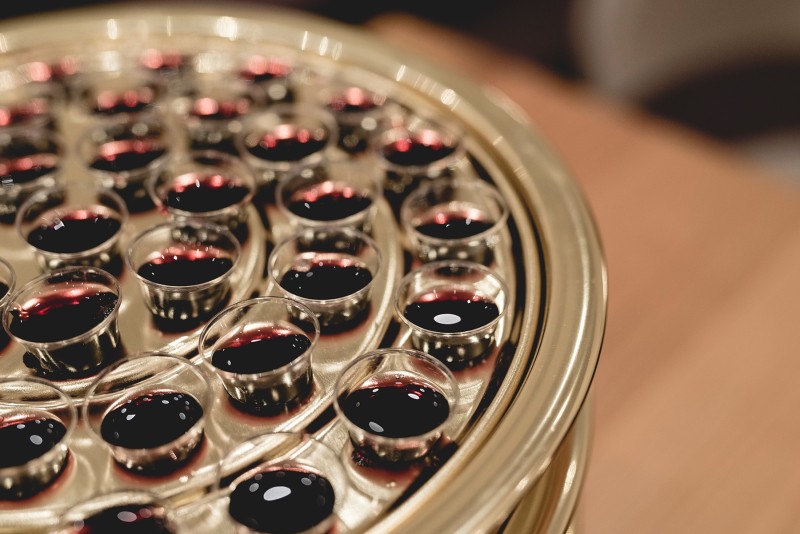An Inside Look at the Passover Service
by Joshua Travers - April 3, 2025
The Passover is a sacred night for God’s people, but it can also be a bit mysterious for young people. What exactly goes on during the Passover?

If you’ve grown up in God’s Church, you’ve probably attended every type of service but one—the Passover. Growing up, you probably had your parents make arrangements for you to be cared for, and then they and the other baptized adults disappeared for over an hour.
Though not intended to be secretive, the Passover can be viewed as a mysterious night to those who don’t participate. In ancient times, some thought that Christians performed cannibalistic rituals during the Passover due to a terrible misunderstanding about the bread and the wine.
Hopefully, at some point, you’ll deeply consider becoming baptized yourself. So you might like to know what baptized members do on this night.
So let’s address the question: What exactly is going on during the Passover?
Why only the baptized?
Of all God’s festivals, only the Passover has restrictions on who can participate. God made it very clear that only specific people could participate in the Passover when He established it in Exodus: “This is the ordinance of the Passover: No foreigner shall eat it. But every man’s servant who is bought for money, when you have circumcised him, then he may eat it. A sojourner and a hired servant shall not eat it” (Exodus 12:43-45).
In the Old Testament, only the Israelites could eat the Passover meal. In the New Testament, Christ changed the symbols of the Passover, and now only baptized members of the Church (spiritual descendants of Abraham and children of God through receiving the Holy Spirit) are to participate.
Partaking of the symbols that Christ established for the Passover is a very serious matter that requires spiritual discernment, wisdom, solemnity and commitment. The apostle Paul took the Corinthian congregation to task because they were keeping the Passover inappropriately (1 Corinthians 11:27-30).
A sacred and solemn observance
If you were present to witness a Passover service, what you would immediately notice is how solemn everyone is. The Passover is the most sacred night of the year for God’s people. No other night even comes close. Members are there to deeply reflect on the sacrifice of Jesus Christ and renew the solemn commitment that they made to Him and His way of life at baptism.
Because of that, it’s not an evening for fellowship. Brethren are encouraged to come early to reduce the chances of being late and to ensure that everyone is ready when the service begins. While they wait for it to begin, members usually sit quietly, reflecting on Christ’s sacrifice and reading their Bibles (especially such passages as the Passover and crucifixion accounts in the Gospels and the Suffering Servant prophecies in Isaiah).
Typically, the only words spoken are when an usher directs someone to a seat.
Then the service begins.
The foot washing
The first part of the Passover is the foot washing, which is based on what John records Jesus did in John 13:1-17. After the officiating elder reads some scriptures on foot washing and its significance, the men and women attending will split into two groups (usually in separate rooms). The women wash other women’s feet and the men wash other men’s.
Members are to bring towels so that their feet can be dried after the foot washing is complete. Members make sure that their feet are clean before showing up for services and often wear slip-on shoes and loose-fitting socks to make things easier.
Members are paired off—one person sitting and the other kneeling on the floor. The seated member will put his or her foot in the water (usually in a small basin), and his or her partner will gently wash it, dry it off and then repeat the process with the other foot. They then switch places and go through the same process. After the foot washing is complete, members return to their seats and wait until everyone is seated. Then the next part of the ceremony begins.
(The officiating minister will wash his hands after the foot washing, since he will soon be handling the bread.)
The unleavened bread
Next, the service transitions to the bread.
There is rich, powerful symbolism in the bread eaten at Passover because it represents the very body of Jesus Christ, which was horribly beaten and disfigured for our sins. After reading scriptures that explain this symbolism, the elder says a short prayer of blessing, breaks the unleavened bread into many pieces, and instructs the ushers to distribute it to the members.
Members will each take a small piece of the unleavened bread and eat it as they meditate on the incredible sacrifice that Christ made for each of us individually.
The wine
After the bread is eaten, the elder will transition to the symbolism of the wine. After reading scriptures on the significance of Christ’s shed blood, the elder will say a prayer over the wine, which has been poured into small glasses in a tray. Then he will have the ushers pass around the tray. Members will each take a glass, and as they drink the small sip of wine, they will think about how Christ shed His blood for our sins.
Then the ushers will collect the glasses.
Scripture reading
Next, the elder will read from the Gospels about the last Passover Jesus kept—particularly from John 13-17, which has Jesus’ parting words to His disciples and His prayer.
To conclude this sacred service, the congregation will follow the example Jesus and the disciples set in Matthew 26:30 and sing a hymn before they quietly depart for their own homes. The elder can choose the hymn that is sung. Two common choices are “In Thy Lovingkindness, Lord” (hymn number 48) and “They Are Blest Who Are Forgiven” (hymn number 38).
This is the Passover service—the most solemn night of the year for members of God’s Church.
To learn more about the Passover, read our blog post “Questions and Answers About the Christian Passover.”
Continue Reading

Dealing With Overthinking and Social Insecurities
by Haven Swanson - March 18, 2025

Why Can’t I Talk?
by Caleb Averett - March 4, 2025
